Tested: 2021 Volkswagen ID.4 AWD Pro S Proves More Is Better
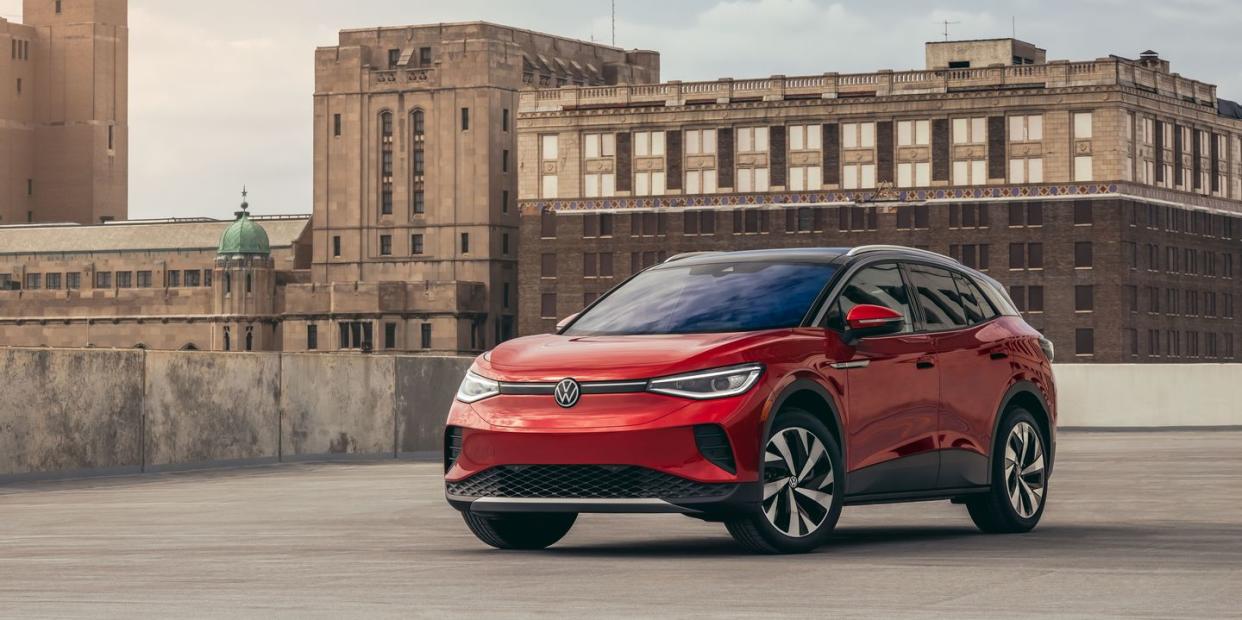
The rear-wheel-drive version of Volkswagen's ID.4 electric compact SUV is a well-equipped, well-priced electric crossover to suit the needs of many drivers. A bit of excitement is about all it's lacking, really. Oh look, here's the 2021 Volkswagen ID.4 AWD.
Priced at $44,870, the 2021 ID.4 AWD Pro gains a 107-hp front-mounted motor, for an almost 50 percent increase in power. With a combined 295 horsepower and 339 pound-feet of torque, the AWD version zips to 60 mph in a scant 5.4 seconds, lopping a very noticeable 2.2 seconds off the rear-wheel-drive model's time. No ID.4 is going to be confused with a driver's car, but the big bump in power—and the two additional wheels putting it to the ground—make for a vast improvement in driving dynamics.
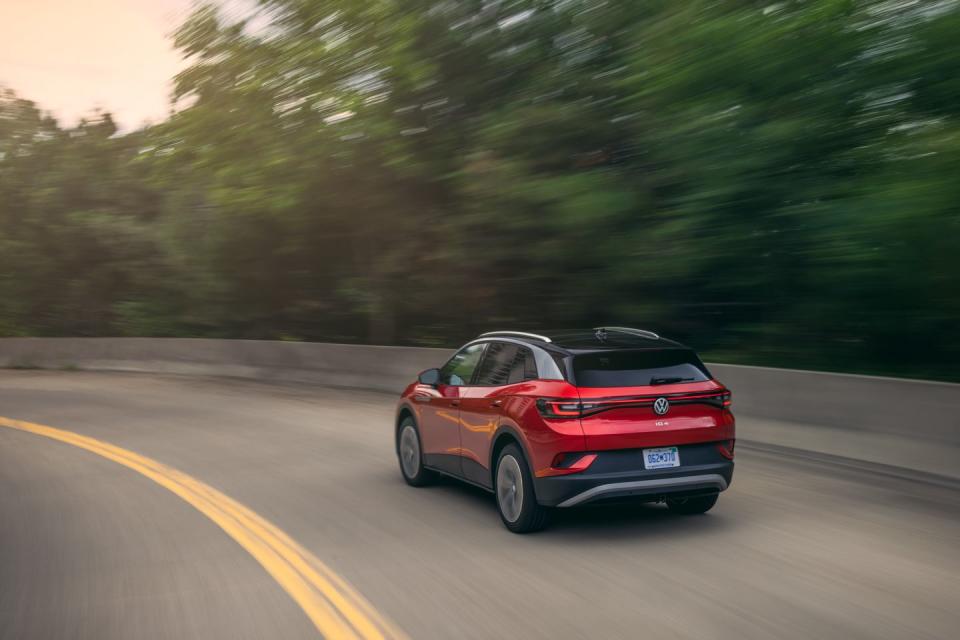
When corners appear, the suspension is for the most part well sorted, especially considering the AWD's extra 223 pounds. Both axles have anti-roll bars; there are struts up front and the rear uses a multilink setup. Trying to hustle the ID.4 through hilly, twisting roads, its mass sometimes outpaces the damping, though, and you start to feel a bit like a buoy at sea—there's the initial compression followed by a compensating but softer second bob. Eventually, those with sensitive inner ears may find themselves having had a bob too many. Suffice it to say, we wouldn't suggest buying an ID.4 for canyon carving.
If you did, though, you'd find both the steering ratio and heft to be well judged. There isn't much feedback, but electric assist has made that largely par for the course these days. It's easy to place the ID.4 precisely in cornering, and there's no need to constantly correct in-lane—you just don't think about it. The best part might be the turning radius, though. Placement of the steering rack ahead of the front-wheel centerline results in an exceptional 36.4-foot figure, not quite as tight as the RWD car's 33.5 feet but still great.
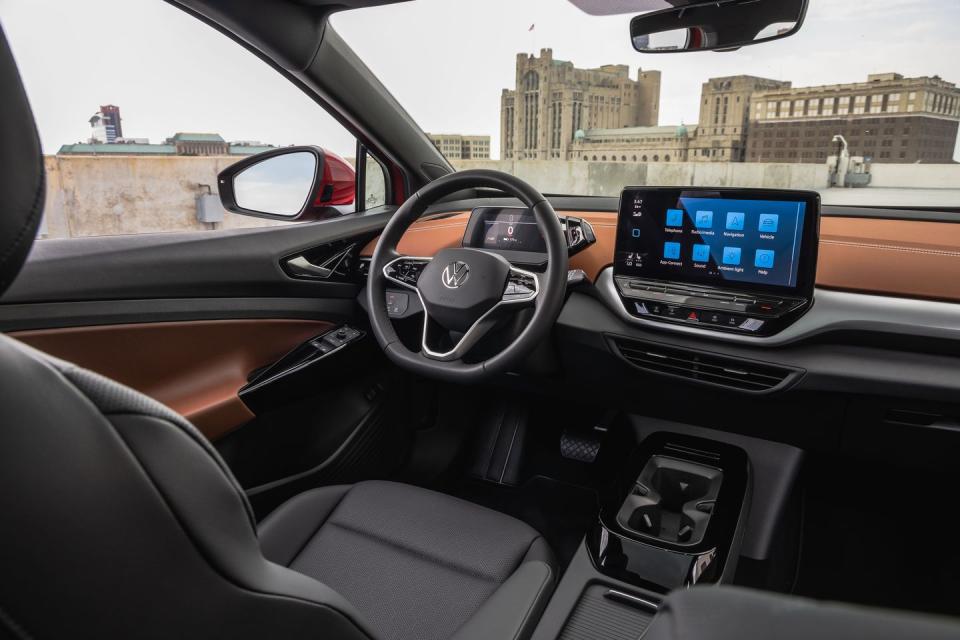
In anything more than moderate braking, it's next to impossible to come to a stop smoothly, however. The pedal offers little feedback—like pushing your foot into a memory foam pillow—then, when you've found the place in the foam that seems to be slowing the car appropriately, the deceleration rate suddenly changes, and you're forced to push harder. But you're not sure how hard, because again, memory foam. Don't read that wrong; the car stops without a problem, but your passengers may not be thrilled with your driving. The phenomenon probably has less to do with the rear drum brakes (which VW says are better at regenerative braking gains) and more to do with the less than seamless transition from regenerative braking to friction braking.
Switching the gear selector into "B" maximizes energy recuperation when you're off the throttle. It's designed to offer "one-pedal driving," but it'd be swell to have a paddle or other fingertip means of adjusting the sensitivity.
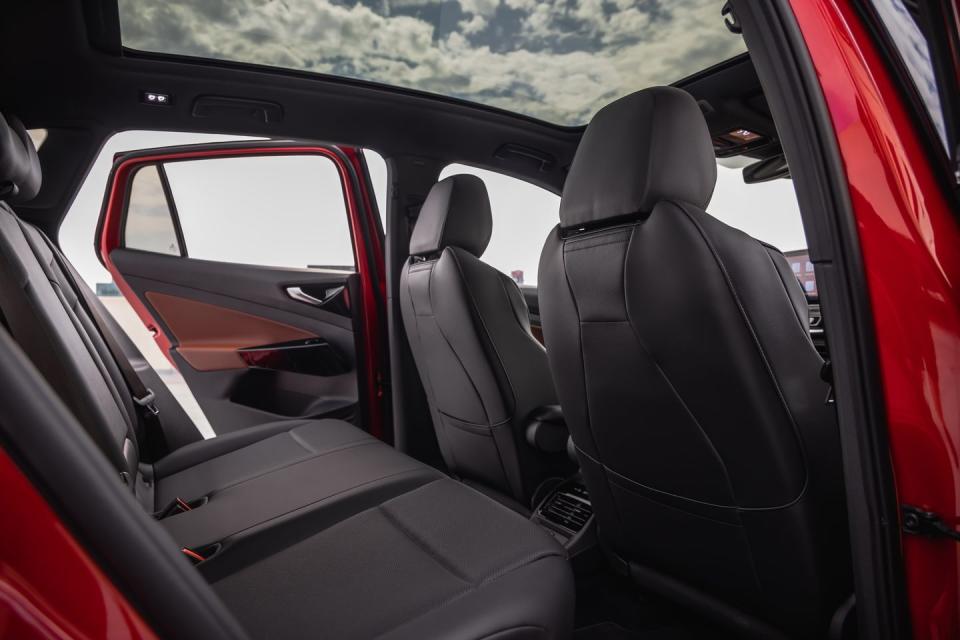
All of the above-mentioned issues might not bother the average driver. Fact is, the ID.4 AWD shines as a daily driver, and much of that has to do with its interior. With no transmission tunnel, it's very roomy, with or without the front motor. There's plenty of headroom, and 30 cubic feet of cargo space behind the 60/40-split rear seats, which expands to an impressive 64 cubic feet with the seatbacks folded.
There's a playfulness about that airy interior that's charming—particularly if you've opted for the white plastics–heavy version. A purple light bar that has to have been inspired by Michael Knight's KITT runs the width of the dashboard, co-witnessing everything from upcoming turns in Navigation to the status of the battery as it charges. Gimmicky, you say? Maybe, but if you didn't get the hint from the "Play"/"Pause" accelerator and brake pedals, you're not going to get the rest of the ID.4.
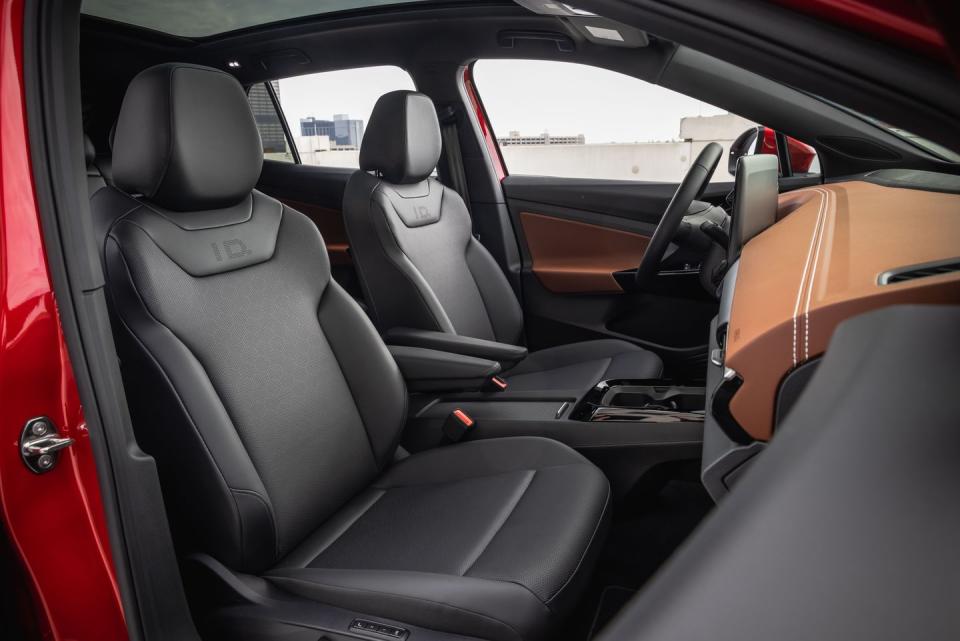
There are surprising luxuries inside, too. The leatherette-covered, 12-way power seats of the Pro S trim offer a massage function, and the leather-wrapped steering wheel is heated. You'll spot some less-than-premium interior plastics, specifically around the dashboard and door panels, but overall, the ID.4's interior comes off as modern and minimalist.
The infotainment system uses a 10-inch center display (12-inch in the Pro S) that's sluggish and largely unintuitive, while the rest of the switchgear relies entirely too heavily on touch-sensitive controls. You'll take your eyes off the road to engage with a touch button even to adjust the mirror or roll down the rear windows. We'll say the same thing we've said when other manufacturers have overdosed on touch-everything: Neat, but please bring back tactile buttons and knobs as soon as possible.
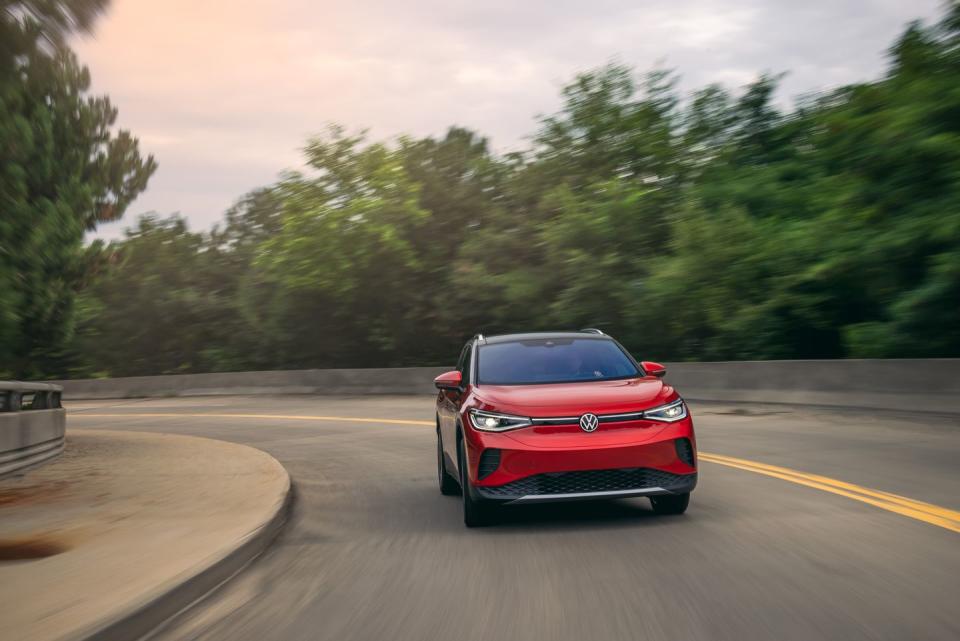
The ID.4 AWD Pro is identically equipped to the rear-drive version save for a 0.6-inch suspension lift and heated windshield. That's no disappointment as the ID.4 Pro models arrive nicely loaded with standard features such as keyless access, 19-inch wheels, and a host of driver-assist and safety systems. A tow hitch is standard and the AWD is capable of towing 2700 pounds, 500 more than the single-motor variant.
The AWD Pro S starts at $49,370 and adds upgraded LED headlights, power mirrors with puddle lights, and a liftgate with hands-free operation, among other features. A $1500 Gradient Package gives the AWD Pro S 20-inch wheels and a black-painted roof with silver accents, including on the roof rails and the C-pillars. The ID.4 models are eligible for the $7500 federal tax credit and, depending on where you live, state tax credits may help drop pricing even further.
The ID.4 AWD's range suffers just a bit for the extra weight and performance, but not that much. The AWD Pro's range is EPA estimated at 249 miles and the AWD Pro S at 240 miles. That's not quite the 260-mile range of the single-motor Pro and 250-mile Pro S, but it's a more than fair trade for the significant bump in power.

The ID.4 AWD is compatible with Level 1, 2, and 3 charging. In real-world terms, that means you can use everything from home outlets to Electrify America's high-powered charging stations to push juice into the 11-kW onboard charger. If you use a level 50-amp charger, you can fill up the ID.4 in a claimed seven and a half hours. Better yet, take advantage of VW's offering of three years free fast-charging at Electrify America stations. Volkswagen says that when connected to a fast-charger, the ID.4 can be charged from 5 to 80 percent in just under 40 minutes.
In the end, whatever quibbles we might have with the ID.4 should probably be overlooked if you're in the market for an affordable electric SUV. Why? The seriously well-equipped ID.4 AWD is every bit the deal Volkswagen says it is. After factoring in potential tax credits and incentives, the ID.4 AWD Pro lands in the mid- to high-$30,000 range. And the extra punch of the second motor is a bonus that may just quell your cynicism about electric cars.
You Might Also Like

